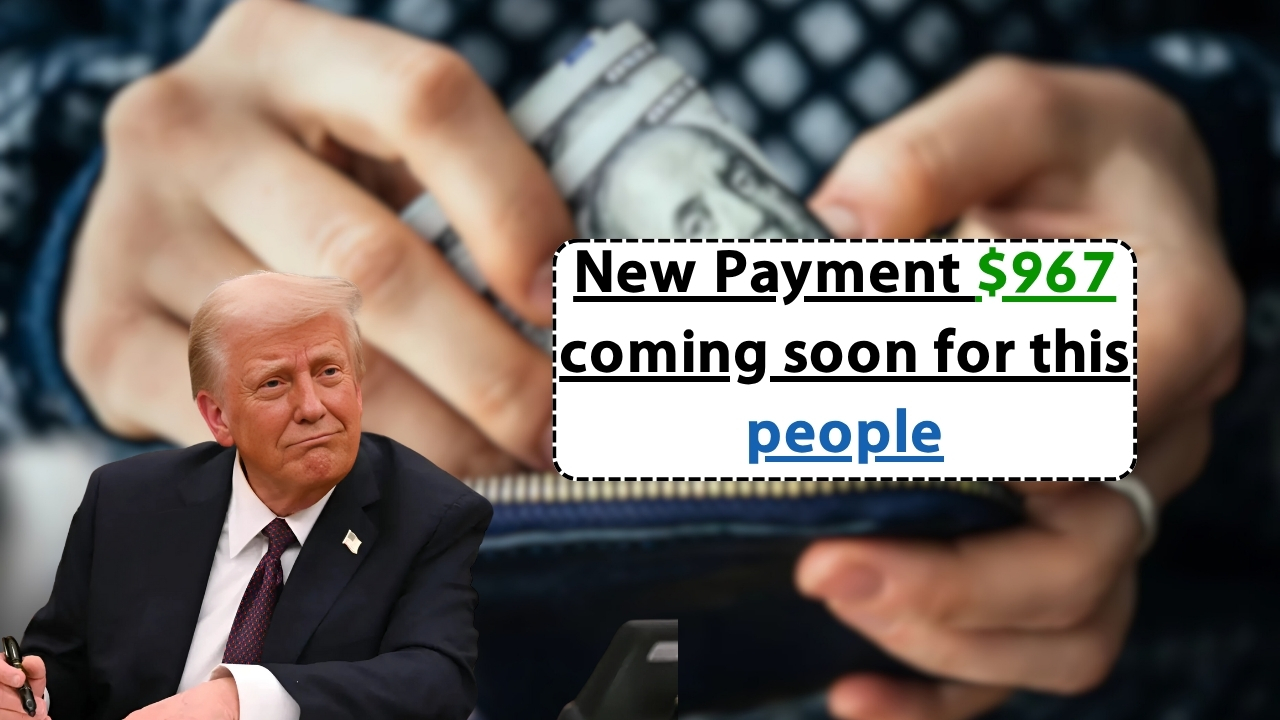New Payment : Financial relief arrives soon for millions of Americans through a new $967 payment program designed to assist those facing economic hardship in today’s challenging environment.
This targeted assistance differs from previous universal payments by focusing specifically on vulnerable populations who need support the most right now.
Understanding eligibility requirements becomes essential since not everyone qualifies for this federal benefit, making early preparation crucial for potential recipients.
The payment amount of $967 represents careful calculation by federal agencies analyzing typical household expenses and current economic pressures affecting American families.
Eligible Groups and Categories
Senior citizens collecting Social Security benefits constitute the largest group eligible for this payment, particularly those relying solely on fixed incomes without substantial savings.
Age requirements begin at 65 for most recipients, though certain circumstances allow younger individuals with specific qualifying conditions to access these funds.
Disabled Americans receiving federal disability benefits through SSDI or SSI programs automatically enter the eligible pool, recognizing their unique financial challenges.
Military veterans with service-connected disabilities receive special consideration under the program, acknowledging their sacrifices and ongoing medical expenses.
Low-income families raising dependent children qualify when meeting household income thresholds that adjust based on the number of children being supported.
Single parents receive particular attention within eligibility guidelines since they often face doubled responsibilities with single incomes supporting entire households.
Recent widows and widowers may qualify under survivor benefit provisions, especially when experiencing sudden income loss after spousal death.
Specific Income Requirements
Individual applicants must demonstrate annual income below $29,400 to qualify, with this threshold representing adjusted gross income from all sources.
Married couples face a combined income limit of $39,200, recognizing shared household expenses while maintaining program focus on those truly needing assistance.
Each dependent child in the household raises income limits by $4,800, acknowledging that larger families face proportionally higher expenses for necessities.
The program counts wages, self-employment income, investment returns, and most pension payments when calculating total household income for eligibility purposes.
Certain benefits remain excluded from calculations, including SNAP food assistance, housing vouchers, and emergency disaster relief payments received during the qualifying period.
Recent financial hardships receive special consideration, allowing applicants experiencing job loss or medical emergencies to demonstrate current need despite previous higher earnings.
Asset Limitations and Exclusions
Beyond income requirements, applicants must meet asset restrictions preventing wealthy individuals with low reported income from accessing benefits meant for truly needy populations.
Primary residences receive complete exclusion from asset calculations regardless of home value, recognizing that housing represents necessity rather than liquid wealth.
Vehicle ownership allowances permit one car per adult household member without counting toward asset limits, understanding transportation needs for work and medical appointments.
Retirement savings in qualified accounts face age-adjusted limits, with older applicants allowed higher balances recognizing their limited time to rebuild savings.
Bank accounts, investment portfolios, vacation properties, and valuable collections count toward the $15,000 individual or $22,500 couple asset limits.
Small business owners face complex calculations determining whether business assets count as personal wealth or necessary operational equipment for income generation.
Application Requirements and Process
Submitting applications through official government portals provides the most efficient path to payment approval, with online systems offering real-time validation and faster processing.
Required documentation includes government-issued photo identification, Social Security cards for all household members, and comprehensive income verification from multiple sources.
Previous year’s tax returns serve as primary income documentation, though recent pay stubs help demonstrate current financial situations for those experiencing changes.
Bank statements from the past three months verify asset holdings while showing current financial struggles through depleted savings and minimal balances.
Special circumstances require additional documentation, such as disability award letters, veteran discharge papers, or custody agreements for dependent children claimed.
Community organizations nationwide offer application assistance for those lacking internet access or needing help understanding complex eligibility requirements and documentation needs.
Payment Timeline and Methods
Approved applications typically result in payment distribution within three to six weeks, though automatic qualifiers may receive funds sooner without applying.
Direct deposit remains the preferred distribution method, offering fastest access and greatest security while eliminating risks associated with mail delivery delays.
Paper checks serve those without banking relationships, though recipients should expect additional processing time and potential mail-related delays affecting access.
Prepaid debit cards provide middle-ground options for unbanked individuals wanting faster access than checks while avoiding traditional banking relationships entirely.
Distribution dates follow established patterns similar to Social Security payments, with specific dates determined by recipients’ birth dates for orderly processing.
Critical Warnings and Protections
Scammers aggressively target potential payment recipients using sophisticated schemes including fake government websites and convincing phone calls demanding personal information.
Legitimate government communications never demand immediate payment or threaten benefit loss without written notice, making such contacts clear fraud indicators.
Official applications exclusively use .gov websites with secure encryption, never requiring payment for application processing or eligibility determination services.
Personal information like full Social Security numbers and banking passwords should never be shared through email or phone calls claiming to expedite payments.
New Payment Next Steps for Potential Recipients
Checking eligibility immediately through official screening tools helps determine qualification likelihood before investing time in full application processes.
Gathering necessary documentation early prevents application delays, ensuring all required proofs are readily available when beginning the submission process.
Submitting complete applications as soon as possible maximizes chances of receiving payment in initial distribution waves rather than waiting for later processing.
Monitoring application status through secure government portals provides updates while protecting against fraud attempts using fake status check services.
Maintaining copies of all submitted documentation protects against potential future verification requests while providing necessary records for tax purposes.
This $967 payment opportunity represents significant financial assistance for qualifying Americans facing genuine economic hardship during these challenging times.
Taking prompt action to verify eligibility and submit required applications ensures those needing help can access available resources without unnecessary delays.
